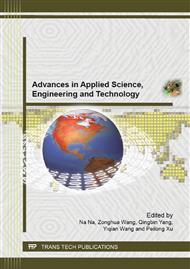p.819
p.823
p.827
p.832
p.836
p.840
p.844
p.848
p.852
Predictive Efficiency Comparison of ARIMA-Time-Series and the Grey System GM(1,1) Forecast Model on Forecasting the Incidence Rate of Hepatitis B
Abstract:
To compare the stochastic autoregressive integrated moving average (ARIMA) model and the grey system GM(1,1) model to predict the hepatitis B incidence in Qianan. Considering the Box-Jenkins modeling and GM(1,1) model approach, hepatitis B incidence was collected monthly from 2004 to 2011, a SARIMA model and a gray system GM(1,1) model were fit. Then, these models were used for calculating hepatitis B incidence for the last 6 observations compared with observed data. The constructed models were performed to predict the monthly incidence rate in 2013. The model SARIMA(0,1,1)(0,1,1)12 and was established finally and the residual sequence was a white noise sequence. Using Excel 2003 to establish the gray system GM(1,1) model of hepatitis B incidence and evaluating the accuracy of the mode as well as forecasting. By posterior-error-test (C=0.435, p=0.821) and residual test, the model accuracy was qualified. It was necessary and practical to apply the approach of ARIMA model in fitting time series to predict hepatitis within a short lead time. The prediction results showed that the hepatitis B incidence in 2013 had a slight upward trend.
Info:
Periodical:
Pages:
836-839
Citation:
Online since:
June 2013
Authors:
Keywords:
Price:
Сopyright:
© 2013 Trans Tech Publications Ltd. All Rights Reserved
Share:
Citation:


